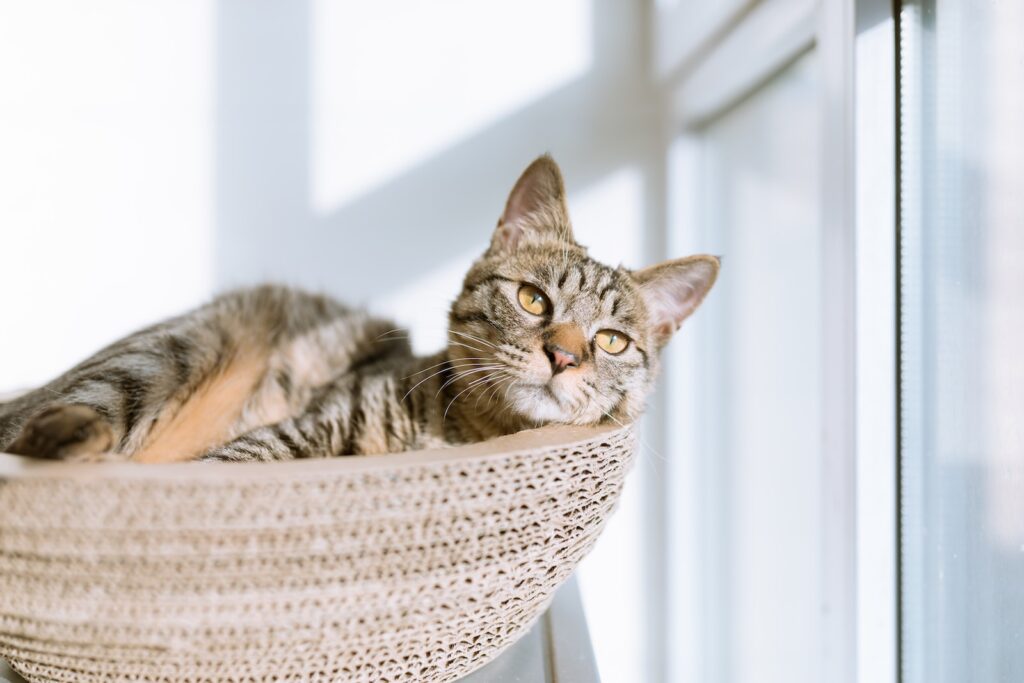Can Cats Eat Cabbage? — Yes, They can
Cats can eat cabbage, but it should be given to them in moderation. While cabbage is not toxic to cats, it can cause gastrointestinal upset if they consume it in large quantities. Feeding your cat small amounts of cooked or steamed cabbage occasionally can be a safe and healthy addition to their diet.
Can Kittens Eat Cabbage?
Kittens can also eat cabbage, but it is important to introduce new foods slowly and in small portions. Their digestive systems are still developing, so it’s best to offer cabbage to kittens in very small amounts to see how they tolerate it. If there are no adverse reactions, cabbage can be included as a part of their balanced diet.
Things to consider when feeding cabbage to kittens?
When feeding cabbage to kittens, it is crucial to ensure that it is thoroughly cooked or steamed to make it easier for them to digest. Raw cabbage may be difficult for kittens to chew and digest properly, potentially leading to stomach discomfort or choking hazards.
Nutritional Benefits of Cabbage for Cats — Why Cabbage is Good for Cats?
Fiber Content
Cabbage is a great source of fiber for cats. Fiber helps regulate their digestive system and can prevent issues like constipation. It also promotes a healthy gut flora, which is essential for overall well-being.
Vitamins and Minerals
Cabbage is rich in vitamins K, C, and B6. These vitamins support a cat’s immune system, promote healthy skin and coat, and contribute to proper bone development.
Antioxidant Properties
Cabbage contains antioxidants that help combat free radicals in a cat’s body, reducing the risk of cellular damage and certain diseases. These antioxidants contribute to overall health and well-being.
Hydration
Cabbage has a high water content, which can help keep cats hydrated. Adequate hydration is important for various bodily functions, including kidney health and digestion.
Potential Allergies: Can Cats Be Allergic to Cabbage?
While cat allergies to cabbage are uncommon, some cats may have individual sensitivities. It’s important to monitor your cat for any signs of allergies or adverse reactions when introducing cabbage into their diet.
Symptoms of Cabbage Allergies in Cats
- Itching or Skin Irritation: If your cat develops itchy skin or shows signs of skin irritation after consuming cabbage, it may be a sign of an allergic reaction.
- Gastrointestinal Upset: Vomiting, diarrhea, or changes in appetite can indicate that your cat is experiencing an adverse reaction to cabbage.
- Respiratory Issues: Some cats may experience coughing, wheezing, or difficulty breathing as a result of cabbage allergies.
What to Do If Your Cat Shows Symptoms?
- Consult Your Veterinarian: If you suspect your cat is experiencing an allergic reaction to cabbage or any other food, consult your veterinarian for proper guidance and advice.
- Eliminate Cabbage: If your cat exhibits allergy symptoms, remove cabbage from their diet and observe if the symptoms resolve.
- Alternative Food Options: If your cat cannot tolerate cabbage, consult your veterinarian to find suitable alternatives that provide similar nutritional benefits.
Recommended Amount: How Much Cabbage Can a Cat Consume?
When offering cabbage to your cat, it should only be given as a treat or occasional addition to their regular meals. A small piece of cooked or steamed cabbage once or twice a week is sufficient for most cats. It’s essential not to overfeed cabbage to prevent any digestive issues.
Things to Consider When Feeding Cabbage to Cats
While cabbage can be a healthy addition to a cat’s diet, it should not replace their regular balanced cat food. Cabbage should be served in small portions and thoroughly cooked or steamed to aid digestion. Monitor your cat’s reaction to cabbage and consult a veterinarian if you notice any adverse symptoms.
How to Feed Cabbage to Cats: A Quick Guide
Introducing cabbage to your cat’s diet can be a delightful and healthy experience. Here’s a simple recipe to incorporate cabbage:
Steamed Cabbage Delight
Ingredients:
- 1 cup of finely chopped cabbage
- Water for steaming
Instructions:
- Thoroughly wash and chop the cabbage into small, cat-friendly pieces.
- Place the chopped cabbage in a steamer basket.
- Bring water to a boil in a steamer pot.
- Steam the cabbage for about 5–7 minutes until it becomes tender but not mushy.
- Allow the steamed cabbage to cool down before serving it to your cat.
Conclusion
In conclusion, cats can eat cabbage in moderation. It offers nutritional benefits such as fiber, essential vitamins, minerals, and antioxidants. However, it’s important to introduce cabbage slowly and ensure that it is cooked or steamed for easy digestion. Watch out for any potential allergies and always consult with your veterinarian before making any significant changes to your cat’s diet. Treat cabbage as an occasional addition to their well-balanced cat food for a healthy and enjoyable feline experience.






